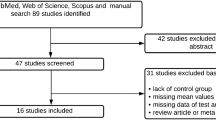Abstract
The aim of the present study was to find out whether haloperidol-induced rigidity was similar to that seen in parkinsonism. Simultaneous measurements of the muscle resistance (mechanomyogram, MMG) of the hind foot to passive flexion and extension in the ankle joint, as well as determination of the electromyographic (EMG) activity of the gastrocnemius and tibialis anterior muscles of rats were carried out. Haloperidol was injected in doses of 0.5–10 mg/kg 1 h before the start of measurements. Haloperidol increased, in a dose-dependent manner, the muscle resistance of the rat's hind leg to passive movements. Muscle rigidity was accompanied with an increase resting, as well as in the stretch-induced long-latency EMG activity (in which supraspinal reflexes are most probably involved) in both those muscles, whereas the short-latency EMG activity (first large bursts of EMG activity, beginning ca. 9 ms after the start of a movement, probably of a spinal origin) was significantly decreased. The obtained results suggest that the haloperidol-increased MMG/EMG activity might be a good model of parkinsonian rigidity.
Similar content being viewed by others
References
Baldessarini RJ (1985) Drags and the treatment of psychiatric disorders. In: Gilman AG, Goodman LS, Rall TW, Murad F (eds) The pharmacological basis of therapeutics. Macmillan, New York, pp 387–445
Berardelli A, Sabra A, Hallet M (1983) Physiological mechanisms of rigidity in Parkinson's disease. J Neurol Neurosurg Psychiatry 46:45–53
Bergui M, Lopiano L, Paglia G, Quattrocolo G, Scarzella L, Bergamasco B (1992) Stretch reflex of quadriceps femors and its relation to rigidity in Parkinson's disease. Acta Neurol Scand 86:226–229
Burke D, Hagbarth KE, Wallin BG (1977) Reflex mechanisms in Parkinson's rigidity. Scand J Rehab Med 9:15–23
Cody FWJ, MacDermott N, Matthews PBC, Richardson HC (1986) Observations on the genesis of the stretch reflex in Parkinson's disease. Brain 109:229–249
Davidoff RA (1992) Skeletal muscle tone and the misunderstood stretch reflex. Neurology 42:951–963
Delwaide PJ, Sabbatino M, Delwaide C (1986) Some pathophysiological aspects of the parkinsonian rigidity. J Neural Transm 22:129–139
De Ryck M, Teitelbaum P (1983) Morphine versus haloperidol catalepsy in the rat: an electromyographic analysis of postural support mechanisms. Exp Neurol 79:54–76
Ellenbroek B, Schwarz M, Sontag KH, Jaspers R, Cools A (1985a) Muscular rigidity and delineation of a dopamine-specific neostriatal subregion: tonic EMG activity in rats. Brain Res 345:132–140
Ellenbroek B, Schwarz M, Sontag KH, Cools A (1985b) The importance of the striato-nigro-collicular pathway in the expression of halopridol-induced tonic electromyographic activity. Neurosci Lett 54:189–194
Ellenbroek B, Klockgether T, Turski L, Schwarz M (1986) Distinct sites of functional interaction between dopamine, acetylocholine and gamma-aminobutyrate within the neostriatum: an electromyographic study in rats. Neuroscience 17:79–88
Goulon M, Rohan-Chabot P de, Elkharrat D, Gajdos P, Bismuth C, Conso F (1983) Beneficial effects of dantrolene in the treatment of neuroleptic malignant syndrome: a report of two cases. Neurology 33:516–518
Hornykiewicz O (1975) Parkinsonism induced by dopaminergic antagonists. In: Calne DB, Chase TN, Barbeau A (eds) Adv Neurol 9:155–164
Knezevic W, Mastaglia FL, Lefroy RB, Fisher A (1984) Neuroleptic malignant syndrome. Med J Aust 140:28–30
Kolasiewicz W, Baran J, Wolfarth S (1987) Mechanographic analysis of muscle rigidity after morphine and haloperidol: a new methodological approach. Naunyn Schmiedebergs Arch Pharmacol 335:449–453
Langer J, Seeber U, Kuschinsky K and Sontag K-H (1979) Effect of haloperidol on reflex activation of rat α-motoneurones. A possible explanation for akinesia and catalepsy. Naunyn Schmiedebergs Arch Pharmacol 308:149–154
Lee RG (1989) Pathophysiology of rigidity and akinesia in Parkinson's disease. Eur Neurol [Suppl 1] 29:13–18
Lee RG, Tatton WG (1975) Motor responses to sudden limb displacements in primates with specific CNS lesions and in human patients with motor system disorders. Can J Neurol Sci 2:285–293
Lorenc-Koci E, Ossowska K, Wardas J, Wolfarth S (1995) Does reserpine induce parkinsonian rigidity? J Neural Transm Park Dis Dement Sect 9:211–223
Marsden CD, Merton PA, Morton HB (1973) Is the human stretch reflex cortical rather than spinal? Lancet I:759–761
Matthews PB (1991) The human stretch reflex and the motor cortex. Trends Neurosci 14:87–91
McEvoy JP, Stiller RL, Farr R (1986) Plasma haloperidol levels drawn at neuroleptic threshold doses: a pilot study. J Clin Psychopharmacol 6:133–138
McHugh TP (1992) Neuroleptic malignant syndrome. JISC Med Assoc 88:303–306
Meara RJ, Cody FWJ (1992) Relationship between electromyographic activity and clinically assessed rigidity studied at the wrist joint in Parkinson's disease. Brain 115:1167–1180
Mortimer JA, Webster DD (1979) Evidence for a quantitative association between EMG stretch responses and parkinsonian rigidity. Brain Res 162:169–173
Ossowska K, Wardas J, Warchal D, Kolasiewicz W, Wolfarth S (1986) GABA mechanisms of ventromedial thalamic nucleus in morphine-induced rigidity. Eur J Pharmacol 129:245–251
Rothwell JC, Obeso JA, Traub MM, Marsden CD (1983) The behaviour of the long-latency stretch reflex in patients with Parkinson's disease. J Neurol Neurosurg Psychiatry 46:35–44
Scholz E, Diener HC, Noth J, Friedemann H, Dichgans J, Bacher M (1987) Medium and long latency EMG responses in leg muscles: Parkinson's disease. J Neurol Neurosurg Psychiatry 50:66–70
Smego RAJR, Durack DT (1982) The neuroleptic malignant syndrome. Arch Intern Med 142:1183–1185
Tatton WG, Bedingham W, Verrier MC, Blair RDG (1984) Characteristic alterations in responses to imposed wrist displacement in Parkinsonian rigidity and dystonia musculorum deforans: Can J Neurol Sci 11:281–287
Tracey DJ, Walmsley B, Brinkman J (1980) Long-loop reflexes can be obtained in spinal monkeys. Neurosci Lett 18:59–65
Wand P, Kuschinsky K, Sontag KH (1973) Morphine-induced muscular rigidity in rats. Eur J Pharmacol 24:189–193
Author information
Authors and Affiliations
Rights and permissions
About this article
Cite this article
Lorenc-Koci, E., Wolfarth, S. & Ossowska, K. Haloperidol-increased muscle tone in rats as a model of parkinsonian rigidity. Exp Brain Res 109, 268–276 (1996). https://doi.org/10.1007/BF00231786
Received:
Accepted:
Issue Date:
DOI: https://doi.org/10.1007/BF00231786




